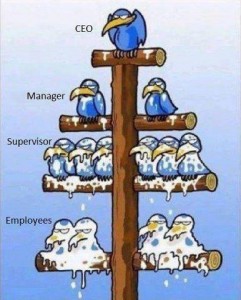Figures Don’t Lie But Liars Sure Can Figure.

Corporate Pyramid
Every reputable network marketing organization separates itself from pyramid schemes and scams by ensuring significant sales to outside customers of its products. Impressively, LIFE Leadership has over 40% of its monthly subscriptions going to customers who are not even part of the compensation plan. This is a testament to just how good the leadership materials are from LIFE.
Sadly, some people have drawn the conclusion that network marketing is like a lottery where only a few draw the winning ticket and everyone else loses. In truth, I was one of those people until I took the time to study the numbers myself. Here is my story of how I went from a community building skeptic to building one of the largest leadership communities in North America.
I graduated from GMI-EMI (now Kettering University) as a manufacturing systems engineer. I became an engineer because I have been fascinated by numbers, statistics, and proportions since I was a kid collecting baseball and football cards. In fact, one summer my brother and I developed an entire board game for baseball based upon player stats and using probabilities that I wasn’t supposed to learn until half-way through engineering school. In any event, numbers, data and the proper reading of the scoreboard has been an essential part of Laurie’s and my success over the years.
For instance, one of the first conundrums I was faced with when I first studied community building was the statistic bantered around against the profession such as the following: “Only 1 out of 100 people actually makes 50k or more per year.” At first hearing, this sounds terrible. You mean to tell me that if I get started I only have a 1 out of 100 chance of making it? But these two statements are not saying the same thing, even though on the surface they may appear to do so.
Let me explain.
The first statement (“only 1 out of 100 people make 50 k or more”) is a snapshot of the profession based upon the fact that for anyone to reach the top of the chart (15,000 points), he must build customers, members, and help them do enough volume for him to hit this level. Typically, by the time a person hits the top of the chart (whether he does it in 3 months or 3 years) he has around 100 active members. Hence, the 1 out of 100 number. In other words, even if 100% of the people made it, they would still make it by bringing in around 100 other active members and the 1% who made it at any particular time would still be true.
However, this doesn’t mean the other 100 people cannot also bring in customers and members who enjoy the life-changing products and do the exact same thing as the person who brought them in. And, when they do, the will have built a team (on average) of 100 people so the 1 out of 100 number remains.
Now to my point.
Given that the nature of community building involves building a community (how’s that for obvious?) and that a leader’s goal is to build 100 active people into his community who service customers and members, then the “1 out of 100” number tells us nothing of the success or failure of the business. Rather, it simply reports on the size of community necessary to earn a certain income, as in my example above when I threw out the hypothetical 50k.
Indeed, the model is hard-wired, or designed for a leader to service a community of 100 people in order to reach 15,000 points and thereby achieve the Leader level in LIFE Leadership to make anywhere from 20k to upwards of 50k (with the CAB program included – see the LIFE Income Disclosure Statement attached at the bottom of this post). Therefore, the real question a new person should be asking is not the 1 out of 100 snapshot, which merely reports that a Leader must build 100 people communities, but rather, how fast can one build 100 people communities?
Let’s consider an example from my automotive process engineering days.
Thousands of sub-assemblies that usually consist of hundreds of parts each are required to build one car. These all come together in a complex process called a final assembly line, in which workers and machines install them, usually on a moving platform or hanger, as the work-in-process car moves down the line. At any given moment in time, if a snapshot of the assembly line were taken, the line would have hundreds of unfinished cars frozen in mid-process. From this snapshot, no one in his right mind would argue that only 1 out of 100 cars is ever completed, or that “the chances” of that assembly line making a car would be a mere “1 out of 100!” This would be absurd reasoning since the other cars are still “in process” and will be completed shortly, if the assembly line is given a chance to continue producing cars, as it is designed to do.
In effect, the nature of the assembly line guarantees that only one car will finish per every 100 (in the example above) on the line because this is the way the process was designed. It is hard-wired or hard-built to do it in just this way.
It is important to understand that community building is a personal development process similar to the assembly line that builds an automobile.
The difference between a successful and unsuccessful automotive assembly line is not the 1 out of 100, but rather the rate at which autos move from beginning to completion. If one assembly line moves through the process in one hour while another takes one year, with all other variables being the same, which would you choose? They both have a snapshot of 1 complete car per 100 in-process, but one is moving the process along much more efficiently. Engineers cannot improve the 1 out of 100 on an existing line, but they can improve the throughput by increasing the speed at which the automobiles advance through the process.
In the same way, this is exactly what a leader does in his community building organization. He cannot improve the 1 out of 100, because that structure is as locked into the design of the pay plan as is the assembly line process for cars, but he can improve the effectiveness of the systematic process to help people achieve top levels faster.
Since everything rises and falls on leadership, LIFE Leadership focuses on helping leaders serve 100 people communities to be rewarded accordingly. The objective is to speed up the leadership growth process by providing world-class events to attend, audios and books to study, and personal mentoring from which to grow.
In most conventional businesses, it takes years and years for a person to achieve an income above 50k, after expenses. With the new CAB compensation and simple Next Step Program, LIFE Leadership is empowering those who work hard and consistently to achieve these levels in shorter and shorter amounts of time. True, not everyone is willing to work that hard, nor will they go that fast, but the leadership of LIFE is committed to creating a process wherein someone can if they are willing to do what it takes. The question for you is: are you ready, willing, and able?
I am thankful for my engineering background because it helped me sort through the data to understand what was relevant and what was not. Sadly, many people miss the big picture because they think of community building as a lottery with “odds” rather than a process with results similar to an automobile assembly line. But for those who will enter into the process and stay long enough to complete their leadership journey, their success can become just as predictable as a finished car rolling off the end of an assembly line.
I have said many times, LIFE Leadership does not promise “easy,” only “worth it.” As the Chairman of the Board and one of the principal owners of LIFE, I wish you all the success you are willing earn!
Sincerely,
Orrin Woodward












